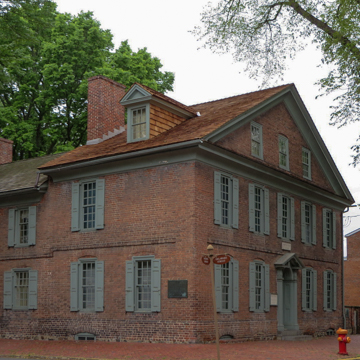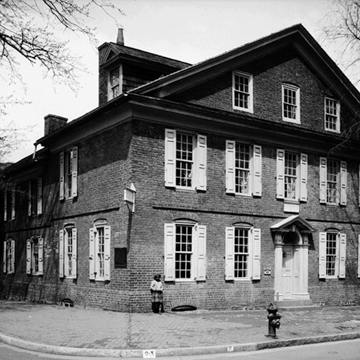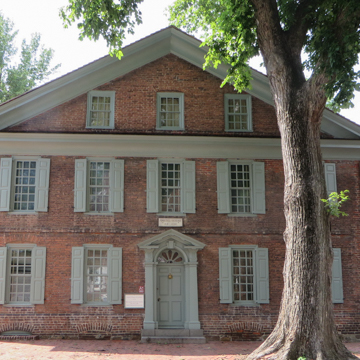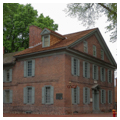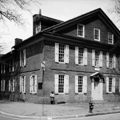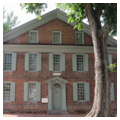This outstanding brick colonial dwelling should properly be called the Dr. John Finney House, for its builder. Its current name, a reference to New Amstel town of the Dutch, was applied by an early-twentieth-century owner, Professor Henry H. Hay, probably following an idea of his restoration architect, Rogers. It has been claimed (doubtfully) that the back service wing is older than the single-pile main block. The front-gable shape of the house is unusual, but other examples exist (with cove cornices, too), such as the stone house Mt. Pleasant, Chester County, Pennsylvania (also 1730s), plus a few later ones on the Eastern Shore. The outstanding Doric front doorway must be an addition, perhaps 1760s, as its fanlight resembles one of that date at Mount Pleasant, Philadelphia. Several prominent New Castle citizens have owned the house, with surnames including Van Dyke, Johns, Bird, and Burnham. A stone slab on the floor of the hall (or “music room”) refers to George Washington attending a wedding here in 1784, a witness reporting that he “stood upon the hearthstone and kissed the pretty girls—as was his wont.” Paneling is extensive, though some was removed in the nineteenth century. In June 1929, just as Colonial Williamsburg got underway in Virginia, New Castle Historical Society bought the Amstel House for a museum, reportedly saving it from imminent destruction. The exceptionally quaint kitchen came to house the largest collection of colonial artifacts in the state, photographed by David Reyam for the WPA Index of American Design. Wealthy Wilmingtonians led the way in restoring Amstel House. The coves and the upper parts of the chimneys were rebuilt (1943–1944), but thankfully, the house has never been over-restored—thereby preserving the feeling of extraordinary age both outside and in.
You are here
Amstel House
If SAH Archipedia has been useful to you, please consider supporting it.
SAH Archipedia tells the story of the United States through its buildings, landscapes, and cities. This freely available resource empowers the public with authoritative knowledge that deepens their understanding and appreciation of the built environment. But the Society of Architectural Historians, which created SAH Archipedia with University of Virginia Press, needs your support to maintain the high-caliber research, writing, photography, cartography, editing, design, and programming that make SAH Archipedia a trusted online resource available to all who value the history of place, heritage tourism, and learning.















